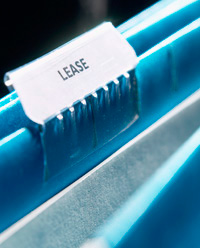 A new lease accounting standard has handed companies a huge task,but a recent survey by EY and the Financial Executives ResearchFoundation suggests businesses are already getting to work.
A new lease accounting standard has handed companies a huge task,but a recent survey by EY and the Financial Executives ResearchFoundation suggests businesses are already getting to work.
The new standard, issued by the Financial Accounting Standards Board in February,requires companies to include leases on the balance sheet for thefirst time.
|The survey of more than 125 CFOs and other finance executivesfound that the vast majority are familiar with the new standard,and almost half have taken some steps to begin to prepare, such asassessing the company's readiness or starting to inventory thecompany's lease data.
|But Anastasia Economos, a partner in EY's financial accountingadvisory services and the firm's Americas lease accounting changeleader, noted that 83% of the respondents have yet to budget fundsfor the lease accounting effort.
|“Going through the budget exercise for a project like this helpsyou recognize the entire effort you need to do,” Economos said.“When you start budgeting for something, you realize the activitiesthat have to take place.”
|Companies in some industries will be more affected by the leaseaccounting standard than others, she said. “But no one is going toget away with not doing anything if they lease. For most companiesthat have significant numbers and values of leases, like retailers,this is hard work.”
|There are three types of leases: real estate leases, equipmentleases, and service agreements with embedded leases. Companiesgenerally have a good handle on their real estate leases, whichtend to be worth a lot of money, but many will be starting fromscratch when it comes to equipment leases and serviceagreements.
|“On the equipment side, most people don't trackinformation that well at all, and if they do, it's only at thecontract level,” said Michael Keeler, CEO of LeaseAccelerator,which provides equipment lease management software.
|Keeler noted that a single equipment lease contract can covermultiple pieces of equipment—hundreds of laptops, for example—whilethe new standard requires companies to account for each piece ofequipment separately.
|“You need to have the capability not only to track the assetlevel, but generate the accounting at the asset level,” he said.“It's very different from what people do today.”
|Service agreements are another challenge because up until now,companies didn't usually bother to do the analysis that determinedwhether the service agreement had a lease embedded, Keeler said.For example, a computer hosting agreement might involve dedicatedcomputers.
|More than half (54%) of the finance executives surveyed saididentifying non-real estate leases would pose a challenge, while66% cited the task of putting together an inventory of all thedata.
|Three-quarters (75%) of the executives expect getting throughthe first-year audit of their lease accounting to be moderately orsignificantly difficult, and 73% said developing policies,procedures, and controls related to lease accounting would be achallenge.
|Companies' efforts to gather data about equipment leases will becomplicated by the fact that in most companies leasing isdecentralized, with decisions made by executives in the businessunits, Keeler said. “Typically no one owns equipment leasing in acompany, and no one owns the performance of a equipment leaseportfolio, the way someone would own real estate.”
|Technology Options
|According to the survey, about half of companies currently tracktheir leases on spreadsheets, and more than 80% said they are stillconsidering their technology options.
| Companies considering acquiring newtechnology “need to think about what the impact will be so they'llbe able to assess what tools they need,” said Economos, pictured atleft. She suggested that companies look at a sample of their leasesto understand what information they need to gather and whattechnology they could use to support that effort.
Companies considering acquiring newtechnology “need to think about what the impact will be so they'llbe able to assess what tools they need,” said Economos, pictured atleft. She suggested that companies look at a sample of their leasesto understand what information they need to gather and whattechnology they could use to support that effort.
The lease accounting changes are hitting companies at the sametime they're dealing with changes in accounting rules regardingrevenue recognition. The revenue recognition changes go into effectat the start of 2018, while the lease accounting changes takeeffect Jan. 1, 2019.
|Keeler noted that regulators are expected to mandate thatcompanies provide three years of comparable data on leases when thenew standard takes effect, and said that should encourage companiesto start their preparations. “The longer you wait, the farther youhave to go back in capturing that historic data,” he said.
|While the lease accounting changes are likely to entailconsiderable effort, Keeler said, companies could also realizesubstantial savings by getting a better handle on their leasemanagement processes. With equipment leases, better data andcontrols could ensure that companies return equipment on time andcould help them negotiate the best rates at the start of the lease,he said.
|When it comes to real estate leases, companies rarely audit theoperating expenses the landlord builds into the lease, Keeler said.“You can save a lot of money just by managing your operatingexpenses.”
|Meanwhile, the survey shows 60% of finance executives expect thechanges in lease accounting to have a moderate or significanteffect on their balance sheet, and 58% see the changes having amoderate or significant effect on their financial disclosures.
|Complete your profile to continue reading and get FREE access to Treasury & Risk, part of your ALM digital membership.
Your access to unlimited Treasury & Risk content isn’t changing.
Once you are an ALM digital member, you’ll receive:
- Critical Treasury & Risk information including in-depth analysis of treasury and finance best practices, case studies with corporate innovators, informative newsletters, educational webcasts and videos, and resources from industry leaders.
- Exclusive discounts on ALM and Treasury & Risk events.
- Access to other award-winning ALM websites including PropertyCasualty360.com and Law.com.
*May exclude premium content
Already have an account? Sign In
© 2024 ALM Global, LLC, All Rights Reserved. Request academic re-use from www.copyright.com. All other uses, submit a request to [email protected]. For more information visit Asset & Logo Licensing.






